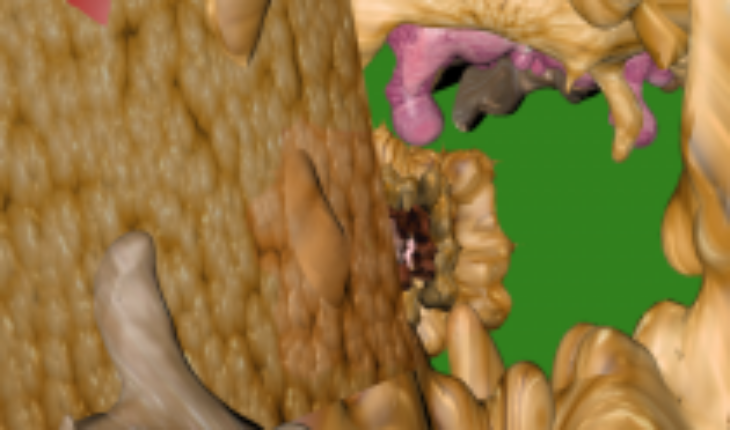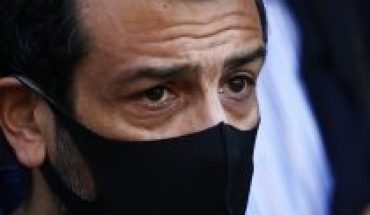Since 2011, the famous Gif of Nyan Cat – a cat with a cookie body that left a rainbow in its wake when passing through the screen – became an iconic image of internet pop culture and in 2021 its creator sold his NFT for 600 thousand dollars. This transaction gave way to a discussion that exists to this day about NFTs, that is, Non-Fungible Tokens or Non-Fungible Tokens in Spanish, that is, a new form of commercialization of digital creations, and precisely this market came to art. What’s more, next week begins the sixth version of Gallery Weekend Santiago, one of the most anticipated visual art events of the year and that for the second time will offer an unprecedented platform with works by 28 digital artists who were chosen to sell their NFT.
This new way of selling digital works has made headlines for the amount of money it has generated. One of the founders of Twitter, Jack Dorsey, sold his first tweet in 2021 for almost three million dollars and the Canadian musical artist Grimes or the Argentine Marta Mirujín have also entered the world of NFT. In Chile, there are several artists who are acquiring NFTs and among the most recognized is the illustrator Alberto Montt.
To understand how they work, the first thing is to understand what a Non-Fungible good is. The concept refers to physical and digital works that are unique, that is, that cannot be reproduced, for example, there is a single painting of the Mona Lisa, that work can be reproduced in posters, t-shirts, pencils and any type of merchandise, however, the original material will never be able to be replicated exactly, that is, it is irreplaceable and that is where the value of the work in the market is.
“Saying no fungible, token or let’s say non-fungible token, has to do today with this new technology or this new system of marketing through cryptocurrencies and different digital systems. Basically they are certificates of authorship and ownership where people can obtain a certain item, “explains the curator, cultural manager collector and photographer, Felipe Forteza.
Valentina Maldonado is among the 28 artists selected by Gallery Weekend to exhibit their digital works between September 28 and October 1. The artist is currently exhibiting on two platforms with digital works that are composed of “two beings that I invented for different fictions,” says the artist.
“nifilim in the cuuerpo de kasdeya”, Valentina Maldonado
He also considers that “being able to tokenize a piece of art” is “something revolutionary.”
“Personally, I think it does favor artists, especially those of us who work from and for virtuality, because it immediately throws us into a sea of information, circulation and contact with global agents,” says the artist.
A similar opinion has the artist Sebastián Riffo Montenegro, who will also be exhibiting virtually at Gallery Weekend. For him, NFTs help artists in the sense that “it is a new platform for dissemination and sale”.
“It gives visibility to artists who work in digital formats, these formats have acquired more notoriety and validation within the world of traditional art, and many artists have known how to take advantage of it,” he says.
“The advantages of NFTs is that new digital artists have a greater exposure of their work with this sales tool, there is also work in collaborations between artists to create a work, adding different analog and digital disciplines,” adds Riffo.
The emergence of new forms of art commercialization also responds to a new way of making art. In this sense, many artists are using digital media, such as Valentina Maldonado, who created virtual characters and where digitalization plays a different role than in the twentieth century, when there was no technological development that exists today.
“Buying through the internet has an ambivalent issue, between fascinating and dizzying, because of how “obscene” it can be. On the internet everything is relatively allowed, under its own laws of exposure and exchange. I also like it because it’s similar to getting into a game: expression, speculation, competition and algorithms,” says Maldonado.
The digital and physical market
Carol Schmeisser, an intellectual property lawyer and member of DAO Education, explains that the world of NFT is a digital medium that allows many artists to have a direct monetization for their work.
Additionally, it emphasizes that “the greatest powerWhat the world of NFT can have is that the digital support allows many artists from unconventional media, such as generative art, video dance, to monetize the experiences generated by their art, which otherwise could not be exhibited or done as in exhibitions of traditional galleries or physical media. So, support allows, for example, immersive instances that allow for more varied support that can enrich new media creators’ experiences as well.”
In principle, the artist could market directly to people interested in his art without having to resort to other intermediaries. However, the reality is not that and, as the lawyer describes it, NFTs are still a niche technology, so many artists must turn to people with programming or blockchain knowledge.
However, she is critical and mentions that “in the crypto ecosystem in general, we have to inherit foreign concepts and labels, which does not have much to do with misfortune or Latin American reality.”
In that sense, the visual artist and academic of the Faculty of Arts of the University of Chile, Arturo Cariceo, believes that the NFT are one more form of the art market that also has similar logics to those of the sale of works in physical and that due to the technological revolution sooner or later was going to arrive.
“The NFT would be to generate a market structure, since in the virtual world it is worth that it has the same characteristics that one can find in the market of already physical art,” says Cariceo.
“In the NFT market there is talk of guarantees on the same terms. We will have to see in time if there will be experts in validating these digital guarantees. With this I do not dismiss anything, but to maintain that we are facing a culture and tradition, that of the art market, in another new scenario, “adds the academic.
Cariceo says that finally the world of NFT has to do with a marketing strategy that also occurs in the physical world and the logics of the art market.
“If I go to an art fair, I’m looking for a signature and I’m speculating on a name. Second, as in the physical world, in the digital world I can upload something and I have to pay for it to circulate, but I also have to develop a marketing strategy for it, so that it has visibility and is known, “he says.
Both Cariceo and Schmeisser agree that finally external actors such as virtual galleries or platforms that are necessary for marketing to be effective, so that the principle of NFT could be affected by centralization on the web.
The lawyer mentions the Hic Et Nunc platform, created in 2021 by Brazilian Rafael Lima.
“Artists could set the sale price of the work and compulsorily program a percentage amount between 1% and 10% of what they wanted to reach each time the NFT changed hands. And then there were super well-known artists who took out a limited batch of NFT and people bought them and had them like in their own gallery. And every time it was sold automatically, the percentage was deducted for the artist. It was a platform made by the users, for the users, specifically for the South American user,” explains Schmeisser.
However, the Hic Et Nunc site was deleted by the creator himself due to internal problems and certain criticism he received.
Another criticism that NFTs have received is that there is no verification that the creator of a work is actually the one who is applying for certification. Also, the impact they have on the environment is mentioned, because they emit a large amount of CO2.
“There are many problems with fakes, as anyone can create an NFT e-commerce and copy works without the artists’ permission. There is also talk of the large amount of energy that is used to keep these files online, through server farms, which generates a large amount of CO2, “says the artist Sebastián Riffo.
Finally, Felipe Forteza points out that in Chile there have been some initiatives to sell NFT, but that it has not yet seen a proliferation of this market.
“I haven’t seen them flourish, especially in the collectors’ world. Maybe I’m in that slightly older generation, in which you like to perceive the work physically so as to know effectively if you like it or not,” says the collector.
In that sense, NFTs respond to a digital logic where the buyer or artist does not receive a copy or a physical experience of the work of art, so there is also a different assessment of what art is.
“It seems to me that NFT is another tool in the art world, which is constantly changing, because of theto massification of the virtual world, and the metaverse, so I think it is the beginning of a new way of perceiving art and massifying its message, “says Sebastián Riffo.
“Digital art is being inserted as a new trend. If people are going to have the confidence that what they are buying is a unique work that is not going to multiply or that it is going to be divided into other markets, of course it could flourish. I believe that today art gives for everything. I hope this is not a fad. Supposedly it is a very good system, they have a very good copyright system, which is important, because that assures you that the work is already unique or is a copy, “adds Felipe Forteza.
Follow us on





